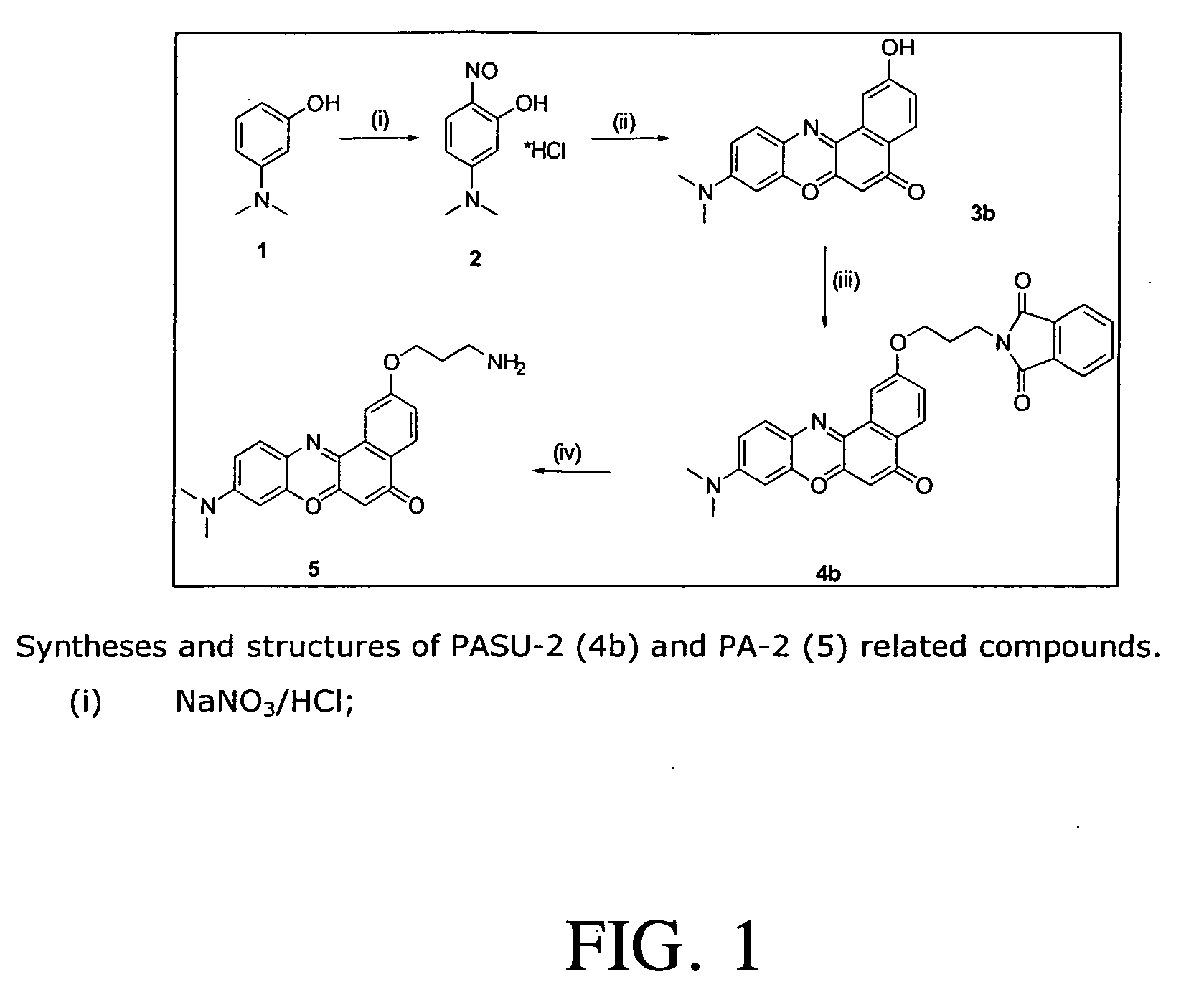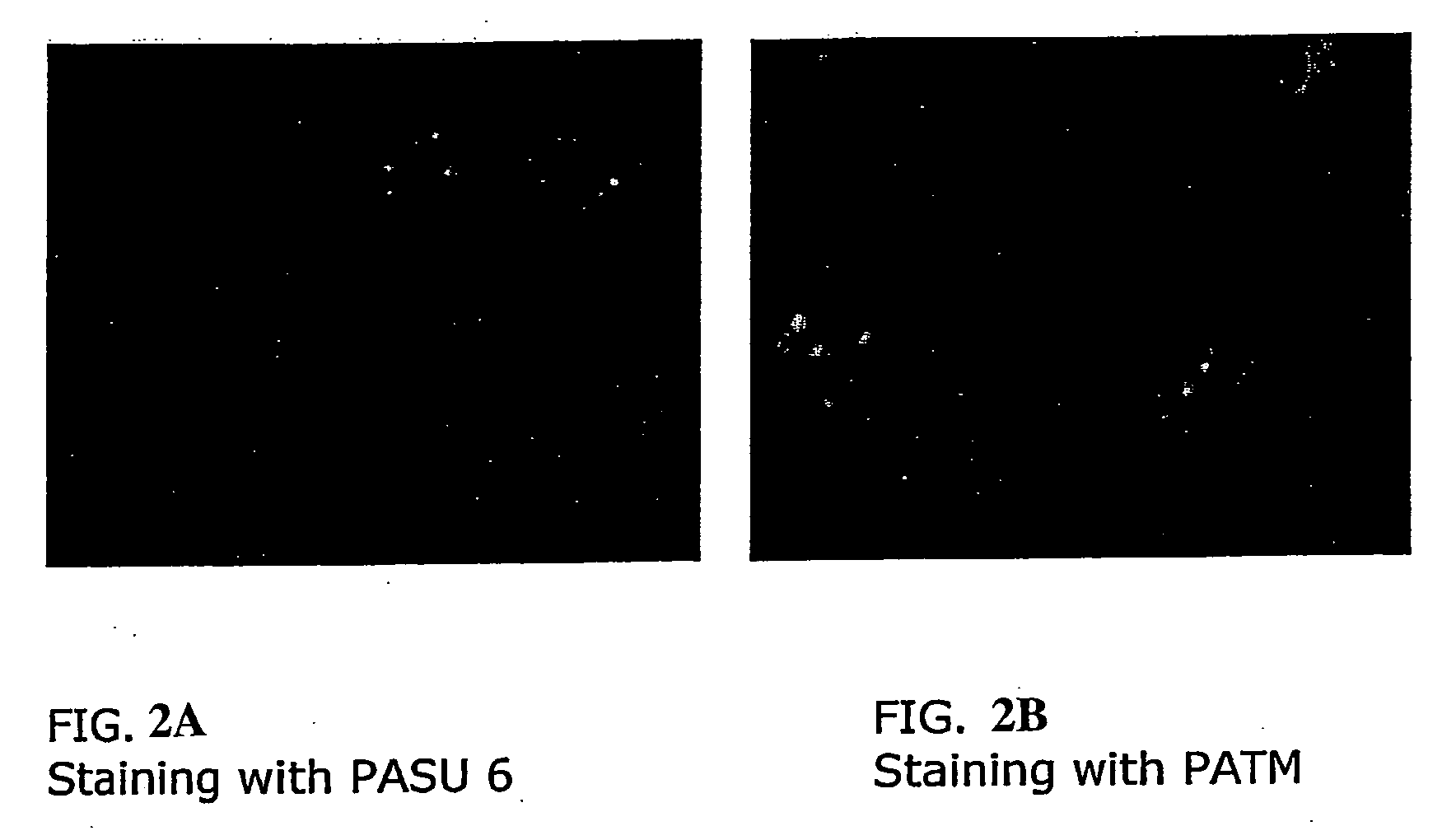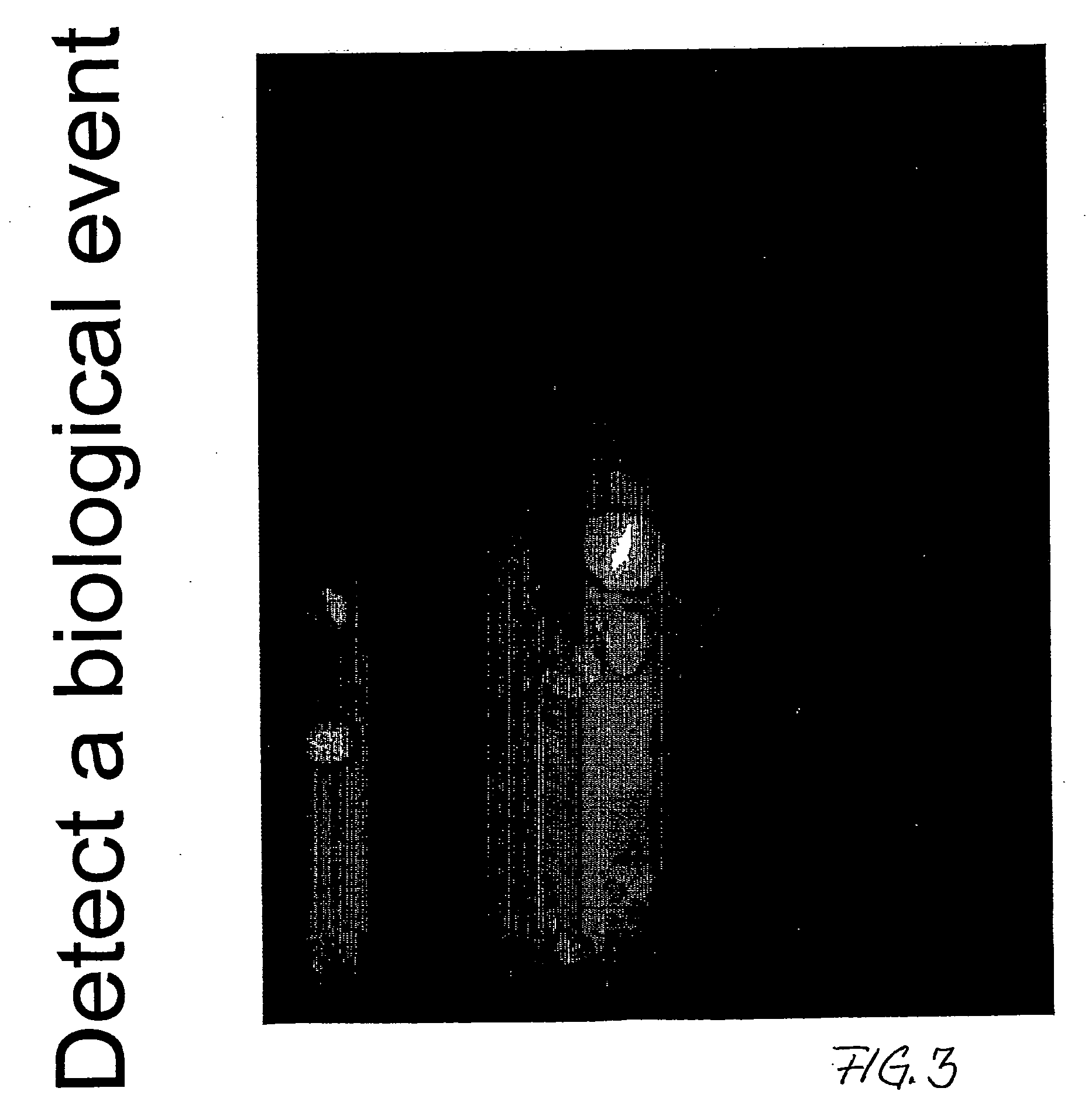Selective chromophores
a chromophores and selective technology, applied in the field of chromophores, can solve the problems of lack of high sensitivity of many studies, limited commercially available fluorescent dyes, and insufficient sensitivity of many studies, and achieve the effect of high sensitivity of many of the dyes available and used today
- Summary
- Abstract
- Description
- Claims
- Application Information
AI Technical Summary
Benefits of technology
Problems solved by technology
Method used
Image
Examples
Embodiment Construction
[0011] It has now been found the compounds of the invention are selective chromophores for staining of cells which compounds comprises a fluorescent chromophore of the general formulae I
wherein only one of the positions 1, 2 or 3 is occupied by a group, wherein R is one of propinyl, aminoalkyl having 2 to 10 carbon atoms in the alkyl group, methoxy- (ethoxy)n-alkyl having 2 to 10 carbon atoms in the alkyl group, and n being 0 to 4, (trimethylamino)-alkyl or (triethylamino)-alkyl or (tripropylamino)-alkyl or acetylamino alkyl having 2 to 10 carbon atoms in the alkyl group, (isoindolinyl-1,3-dione)-alkyl having 2 to 10 carbon atoms in the alkyl group and wherein X is O or N, and R′ is hydrogen, methyl, ethyl or propyl.
[0012] The propinyl group has its triple bond in end position.
[0013] Another aspect of the invention relates to colourless intermediates, of the formula II
wherein R, n, R′ and X have the meanings given above, and R″ means lower alkyl, such as methyl, ethyl, propy...
PUM
| Property | Measurement | Unit |
|---|---|---|
| temperature | aaaaa | aaaaa |
| thick | aaaaa | aaaaa |
| concentration | aaaaa | aaaaa |
Abstract
Description
Claims
Application Information
 Login to View More
Login to View More - R&D
- Intellectual Property
- Life Sciences
- Materials
- Tech Scout
- Unparalleled Data Quality
- Higher Quality Content
- 60% Fewer Hallucinations
Browse by: Latest US Patents, China's latest patents, Technical Efficacy Thesaurus, Application Domain, Technology Topic, Popular Technical Reports.
© 2025 PatSnap. All rights reserved.Legal|Privacy policy|Modern Slavery Act Transparency Statement|Sitemap|About US| Contact US: help@patsnap.com



